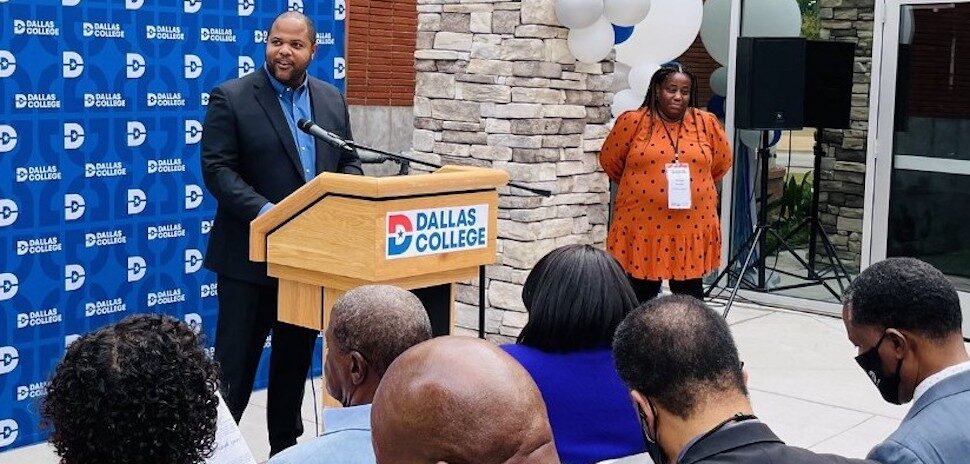Coworking is on the rise, but the office is not the only place that’s taking a turn toward the communal. According to a new report, Dallas is a prime location for growth in co-living, a type of community housing in which multiple people share one home with common areas such as the kitchen, living room, and dining room.
How is that different from having a roommate? According to real estate firm Cushman & Wakefield, co-living aims to help tenants save money, share amenities, and enjoy leasing flexibility in a community run by a skilled operator, often with a tech edge. Amenities could range from dog runs to housekeeping to catered parties. Features like furnished rooms, all-inclusive bills, and gyms are prevalent in co-living buildings.
A recent survey from Cushman & Wakefield looks at the co-living landscape and what’s shaping the multifamily subsector and its emergence as a favored asset class in real estate. Now, the survey says, co-living is growing from a niche to a full-fledged sector.
According to the report, co-living is becoming more popular across the nation, particularly in major metros like New York, Los Angeles, Chicago, Boston, Washington, D.C., and San Francisco. Nationwide, major co-living operators have 3,700 beds with more than 9,300 additional units in the pipeline.
Cushman & Wakefield says tenants choose co-living for a variety of reasons, including flexible lease terms, a sense of community, and the rising cost of housing.
Co-living landlords attract tenants with tech and other amenities
Tenants today are technology-driven and enjoy the innovations that co-living facilities provide, the study said. They include advanced security systems and phone applications for billing and maintenance requests.
Here’s why the study says Dallas is prime for growth in the sector:
- Dallas is 58% renter occupied.
- Over the past five years, Dallas’ rent rates have grown by 27.3%, the fourth-highest growth rate in the nation. That’s higher than larger cities such as Los Angeles, New York City, and Washington, D.C.
- Dallas’ median age of 32.7 is within the prime renting window.
- Younger Dallas residents are struggling to afford a home, especially near the urban core. In Dallas, the median income is $48,244, which is relatively low compared to other major metro areas. Household costs are increasing, too. For example, student loans nationwide have risen nearly 157% since 2008. In the Dallas area, 30.9% of renters are “cost burdened,” showing that they spend more than 30% of their income on housing.
Co-living companies such as Common, which is exploring Dallas as a future market, look at those numbers and see North Texas as a ripe market for entry, Cushman & Wakefield says.
Sandy Albert, senior director of real estate at Common, told Dallas Innovates via email that Dallas’ economy and growth make it attractive for co-living operators.
“Co-living is not just unique to the coasts—it will thrive in Texas and especially Dallas. I love Dallas because it’s one of the fastest growing and most exciting cities in the United States right now—with a booming jobs economy and explosive population growth,” Albert says. “And at the same time, it’s got soul, history, and heritage. These demand drivers and attributes lay the perfect backdrop for why co-living will be an extremely attractive solution for renters who already love Dallas and those looking to move there.”
Albert says that, “At Common, I’m actively looking at sites in Dallas to grow our community in the such a beautiful city.”
Co-living rising on institutional investors’ radar
Citing a Prequin Fund Manager Survey, Cushman & Wakefield’s report suggests institutional fund managers are vying to significantly increase real estate allocations.
That growing trend—as well as demographic, financial, and societal trends such as high college debt and growth in rentership—is putting co-living even more on the institutional investor’s radar.
“Co-living follows in the footsteps of niche asset classes like medical office and senior housing that began with a small footprint but have an increasingly large presence in investor portfolios,” Tjarksen said in a statement. “Demand is proven. Yet, there is still a lack of supply despite market expansion, and this enables institutions to enter during this inflection point. The ability to deploy large amounts of capital in a relatively new and small arena will have an enormous impact. However, this impact will shrink once more co-living companies emerge and more institutions with capital enter the fray.”
Why tenants choose co-living
Three common factors influence someone’s decision to choose co-living, the report states.
First, it’s less expensive because the cost of living in a shared community is roughly 20% less than in an individual apartment.
Secondly, people choose co-living for its connection to a community of individuals—the curated community in a co-living building fosters inclusivity.
The third reason is the ephemeral nature of community renting, Cushman & Wakefield says. Generation Y tenants are mostly single, want flexibility and convenience, and value authentic experiences.
“Tenants increasingly search for residential models that offer both affordability and the community lifestyle they desire,” Tjarksen said. “Simultaneously, multifamily operators have sought models that can optimize per-square-foot rent while understanding renter aversion to high unit-rent prices. The additional density provided in co-living allows real estate owners to enjoy substantially higher rents per square foot, while still providing a more affordable option for renters.”
Albert adds that co-living is appealing to renters in Dallas because it brings a number of services to the tenant that aren’t found in traditional rental agreements.
“Today’s renter wants all of this and they’re used to seamless technology, incredible design, a high level of service and meaningful community—all things co-living offers,” Albert says.
He says that city living need not be “mundane, monotonous, and old school. It can be fun, convenient and new.”
Payton Potter contributed to this report.
![]()
Get on the list.
Dallas Innovates, every day.
Sign up to keep your eye on what’s new and next in Dallas-Fort Worth, every day.


































































